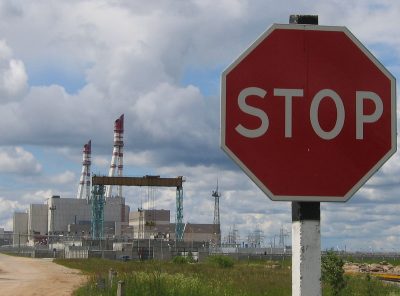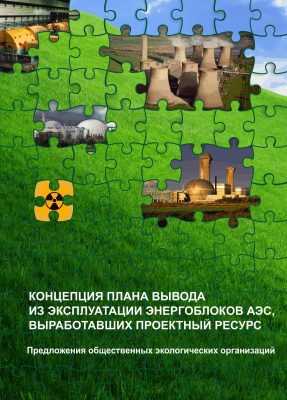2. Lithuanian experience of Ignalina NPP decommissioning
The first power unit of Ignalina NPP was put into operation in 1983, the second - in 1987. The design lifecycle of RBMK-1500 power units is 30 years. After the replacement of technological channels it is possible to operate the reactor for another 30 years.
After the collapse of the Soviet Union the nuclear industry of East European countries became an object of interest of the international community. During the first decade after Ignalina NPP was transferred to the jurisdiction of Lithuanian Republic a number of safety upgrade measures was performed.
Many West European countries having a considerable experience in nuclear power engineering provided large financial and technological support for implementation of the safety upgrade program of Ignalina NPP. The final objective of this program was to ensure compliance of Ignalina NPP with the international nuclear safety standards. In that period a number of detailed safety analysis studies was performed together with experts from different countries. The studies resulted in the identification of certain technically non-upgradeable structural deficiencies of RBMK rectors. E.g. the absence of containment, absence of secondary standby system and others.
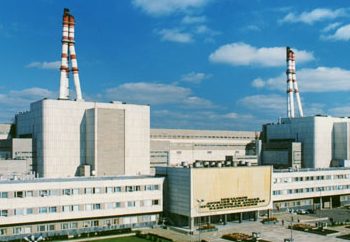
Reasons for NPP closure
In the middle of 1990s by the initiative of G-7 and European Community leaders, the Western governmental authorities responsible for nuclear safety made the examination of nuclear facilities in the former Eastern bloc countries and assigned certain categories to all of nuclear reactors. Each category received recommendations on measures to be implemented to raise the safety level of nuclear power plant to the Western standards. Later the classification of East European NPP in terms of safety and recommendations for its upgrading were considered on the political level. In 1997 they were included into the strategic document of the European
Commission related to the accession of the European Union. This document known as "Agenda 2000” says:
- The first, most dangerous category of nuclear reactors includes power units with the first-generation reactors (VVER-440/230 and RBMK). Modernization of these reactors to the acceptable safety level is not feasible; therefore they cannot be operated for long periods of timе. These are power units 1 and 2 at Bohunice NPP (Slovakia), Ignalina 1 and 2 ( Lithuania) and Kozloduy NPP power units 1-4 in Bulgaria.
- The second category of NPPs with lower level of danger, includes power units with second-generation reactors. They are VVER-440/213 and VVER-1000, which, if properly funded, can be upgraded to meet the Western safety standards. At this the modernization program of theseplants should be completed within 10 years. This category includes Dukovano and Temelin NPPs in the Czech Republic, Bohunice NPP (units 2, 3) and Mohovce NPP in Slovakia, Paksh in Hungary and Kozloduy NPP units 5, 6 in Bulgaria
The third, least dangerous category of nuclear reactors, includes NPPs designed by Western companies - Krsko NPP in Slovenia and Cernovoda NPP in Romania. For them organizational measures were suggested to meet Western safety requirements.
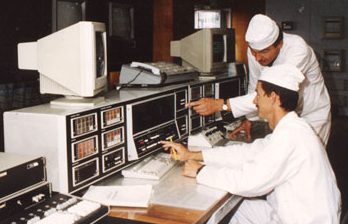
Decision on NPP closure
In this way, Ignalina NPP got into the list of dangerous facilities and its modernization for the long-term operation was decided to be economically unfeasible.
Taking this into account Lithuanian authorities made a decision about the closure of the first Ignalina first unit at Ignalina NPP before the beginning of 2005, and second - by 2010. Following this decision, the preparation for decommissioning was started in 2000. The Low on decommissioning of unit 1 was passed in Lithuanian Parliament in 2000 and the Program for Decommissioning of unit 1 was passed in 2001 (updated in 2005).
Main objectives of this program are en-suring the safety of decommissioning process,
mitigation of adverse socio-economic consequences, also provisions for development and implementation of decommissioning projects within the Program.
Following this Program in 2001-2004 the Ignalina NPP Administration developed, and the Ministry of Economy approved the Final decommissioning plan of unit 1 Ignalina power plant.
Next steps in preparing for decommissioning were: preparation of Decommissioning project, safety analysis of these procedures. The environmental impact assessment from this project was also made.
Decision about decommissioning strategy
For choosing a strategy for decommissioning was analyzed international experiences on different decommissioning strategies, two of them were analyzed in depth - the strategy with immediate decommissioning and disposal of radioactive waste and the strategy with delay period followed by disposal of radioactive waste.
Before taking the final decision an analysis of general socio-economic situation in Lithuania was made, technical potential and financial capacities of the country were estimated.
The final decision criterion for the choice of strategy was the minimization of severe and long-term social, economic, financial and environmental consequences.
As a result of this analysis in 2002 the Lithuanian Government took a decision on decommissioning strategy for unit 1 of Ignalina NPP in favour of immediate decommissioning
and disposal of radioactive waste.
The strategy of immediate power unit decommissioning has certain drawbacks in comparison with delayed dismantling. In this case, the dismantling activities are performed in presence of higher radiation levels. This requires more serious and costly measures for protecting personnel carrying out these operations.
On the other hand, in the immediate decommissioning option the power unit personnel can be employed, which reduces social problems related to the simultaneous loss of many jobs - which is the case, if a decision on the delayed dismantling is taken.
Beside this, the lifting and transportation equipment of the power unit can be used for immediate dismantling. This equipment loses its operational qualities after the waiting period lasting for decades.
The period of time, within which the Ignalina NPP dismantling will get to the "brown field” condition depends on the chosen decommissioning strategy; it is 30 in case of immediate dismantling and 75 years for delayed decommissioning.
Finally the strategy of immediate decommissioning was admitted to be most advantageous
for Ignalina NPP in terms of social, economic and environmental priorities.
In accordance with the chosen immediate decommissioning strategy for the unit 1 the majority of activities including processing of radioactive waste, SNF retrieval and transportation to the temporary storage, dismantling of equipment, pulling down of buildings, etc. will be completed within first twenty five years. This period will be followed by activities mostly dealing with radioactive waste monitoring and disposal.
In terms of nuclear safety most hazardous activities, i.e. SNF management, decontamination,
isolation of radioactive equipment and systems, etc. will be performed during first 10 years after reactor shutdown.
The "brown field” strategy for the Ignalina RBMK-1500 power units turned out to be the most acceptable for engineering, economic and social reasons. It enables to use the available NPP infrastructure, provides employment of ex-operators, stimulates the socio-economic development of the NPP neighborhood.

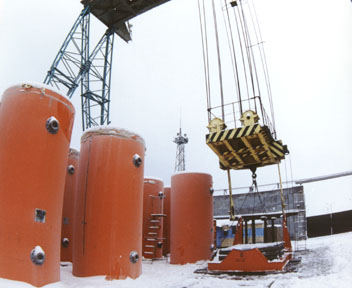

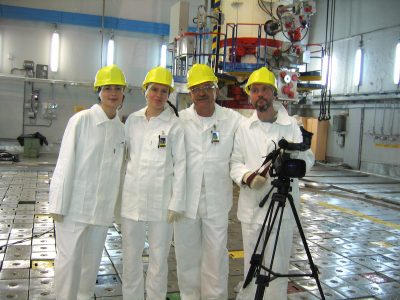
"Зеленый мир" на крышке реактора РБМК
Дополнительные материалы
Видеофильм “Когда приходит час” об опыте вывода из эксплуатации Игналинской АЭС
Фильм о поездке представителей муниципальных властей российского атомного города, профсоюзов АЭС, экспертов атомной индустрии и представителей общественности для знакомства с литовским опытом социального партнерства в кризисной ситуации при закрытии АЭС в г. Висагинас.
Как безопасно выводить из эксплуатации реакторы РБМК?
В этой теме описан практический опыт вывода из эксплуатации тех стран, которые впервые столкнулись с этой проблемой. Этот опыт может быть востребован в тех странах, которые только приступают к этому процессу.
Lectures on this topic:
- 01. Inherent lifecycle limits of nuclear reactors
- 02. Lithuanian experience of Ignalina NPP decommissioning
- 03. German experience of NPP Nord (Greifswald) decommissioning
- 04. Charter of the Public Council on the nuclear energy issues in the Land of Meklenburg, Vorpommern, Germany
- 05. Lithuanian experience of Iganlina NPP Decommissioning Fund establishment and running
- 06. Act on social guarantees for the employees of decommissioned Ignalina NPP
ТЕМЫ КУРСА
- Тема 1. Современное состояние атомной энергетики
- Тема 2. Законодательство России и США об использовании атомной энергии
- Тема 3. Международное право в области использования атомной энергии
- Тема 4. Роль национальных регуляторов США и России в процессе декомиссии
- Тема 5. Возможные подходы и сценарии вывода из эксплуатации
- Тема 6. Существующий опыт вывода из эксплуатации
- Тема 7. Стратегия по обращению с радиактивными отходами (РАО) и отработавшим ядерным топливом (ОЯТ) опыт России и др. стран
- Тема 8. Стратегия по обращению с РАО и ОЯТ опыт США
- Тема 9. Социальные проблемы при выводе из эксплуатации
- Тема 10. Международное и межрегиональное сотрудничество для безопасного вывода из эксплуатации
